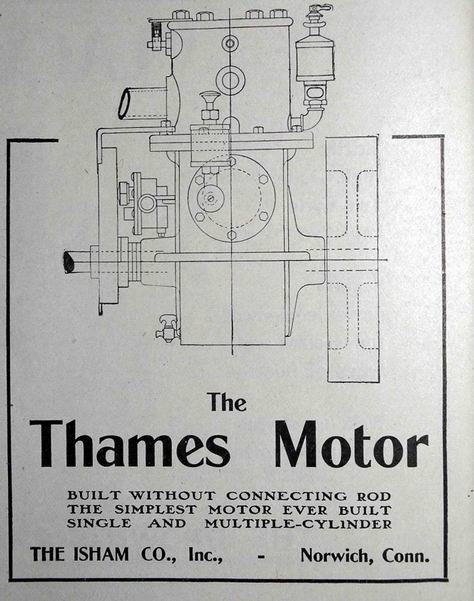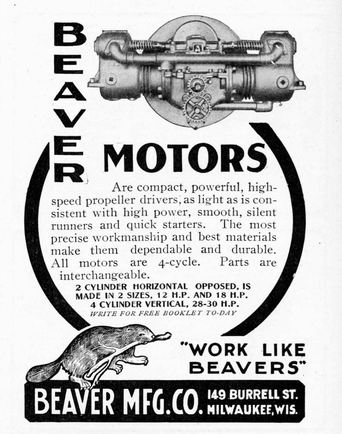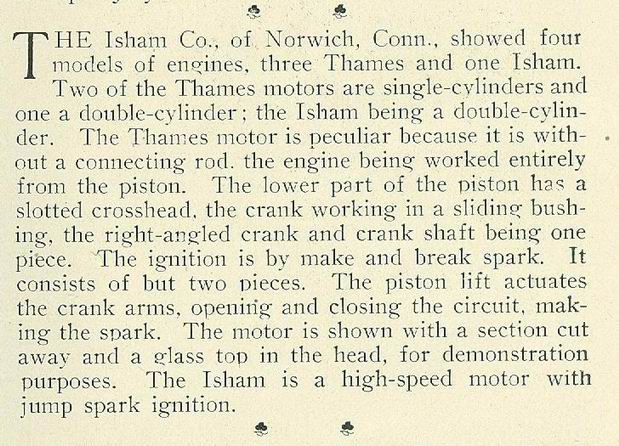| Author |
Message |
    
searcher
Senior Member
Username: searcher
Post Number: 294
Registered: 10-2004
| | Posted on Sunday, March 29, 2009 - 03:20 pm: | 




|
No connecting rod, how does that work?
 |
    
miro
Senior Member
Username: miro
Post Number: 367
Registered: 11-2001

| | Posted on Sunday, March 29, 2009 - 08:26 pm: | 




|
I think it is done with the equivalent of a cross head except that there is a sliding linear bearing in which a pin connected to the crankshaft rides.
Not a bad idea except the linear bearing wears quickly.
About 10 -15 year ago I saw a modern version, using linear ball bearing, but I suspect the cost to manufacture plus the tolerances involved made the idea commercially impractical.
miro |
    
searcher
Senior Member
Username: searcher
Post Number: 295
Registered: 10-2004
| | Posted on Tuesday, March 31, 2009 - 12:26 am: | 




|
Thanks Miro. Another engine question you may be able to answer - there were a number of companies producing horizontal opposed engines in the first quarter of the 20th century like the Beaver shown here or the Van Auken among others. One would think such an engine would be ideal for marine use since they require less headroom. Yet, success for that type of engine was rather fleeting. Why?
 |
    
todd_vidgen
Senior Member
Username: todd_vidgen
Post Number: 113
Registered: 03-2008
| | Posted on Tuesday, March 31, 2009 - 01:21 am: | 




|
Maybe the increased width of the motor stopped
it from being set low in some hulls that had a
deep vee .ie yachts,or some launches with planked
heels.Also if your boat takes water,more of the
motor is exposed to immersion.
Just a thought though.
It absolutely bucketing down here at the moment
so just about anything is getting immersed |
    
miro
Senior Member
Username: miro
Post Number: 369
Registered: 11-2001

| | Posted on Tuesday, March 31, 2009 - 08:51 am: | 




|
Conceptually Todd is right - a sinking boat with a horizontal engine would "die" sooner than a vertically mounted engine. But heck if you're sinking - you've got other issues to deal with.
The first engine in aeroplanes were horizontal.
in automobiles, the same thing.
Interestingly, the best motor ever , for the DisPro boat was the 2 cylinder opposed Coventry Victor, smooth balanced running in a rather lightly built hull.
But , I guess the market spoke and the inherent wisdom of buyers about what they needed/wanted came through.
I think the narrower foot print of a vertical engine had something to do with it.
miro |
    
ernie
Senior Member
Username: ernie
Post Number: 945
Registered: 01-2002

| | Posted on Tuesday, March 31, 2009 - 03:54 pm: | 




|
I have been curious about the Thames engine for years especially since I used to work in Norwich, CT. As to it having a cross head and piston rod I think it is too short to have all that stuff in there. My thoughts are that it maybe used a cam lobe and piston with return spring between the piston and cylinder head.
Just my thoughts
Ernie |
    
ernie
Senior Member
Username: ernie
Post Number: 946
Registered: 01-2002

| | Posted on Tuesday, March 31, 2009 - 04:12 pm: | 




|
Miro,
Did you mean a scotch yoke instead of crosshead? I have a scotch yoke steam engine.
Scotch yoke
From Wikipedia, the free encyclopedia
http://en.wikipedia.org/wiki/Scotch_Yoke |
    
miro
Senior Member
Username: miro
Post Number: 370
Registered: 11-2001

| | Posted on Wednesday, April 01, 2009 - 09:36 am: | 




|
Ernie - right as always - yup - it was a scotch yoke that I had in mind.
miro |
    
richarddurgee
Senior Member
Username: richarddurgee
Post Number: 2042
Registered: 11-2001
| | Posted on Wednesday, April 01, 2009 - 03:54 pm: | 




|
*
1905

* |


